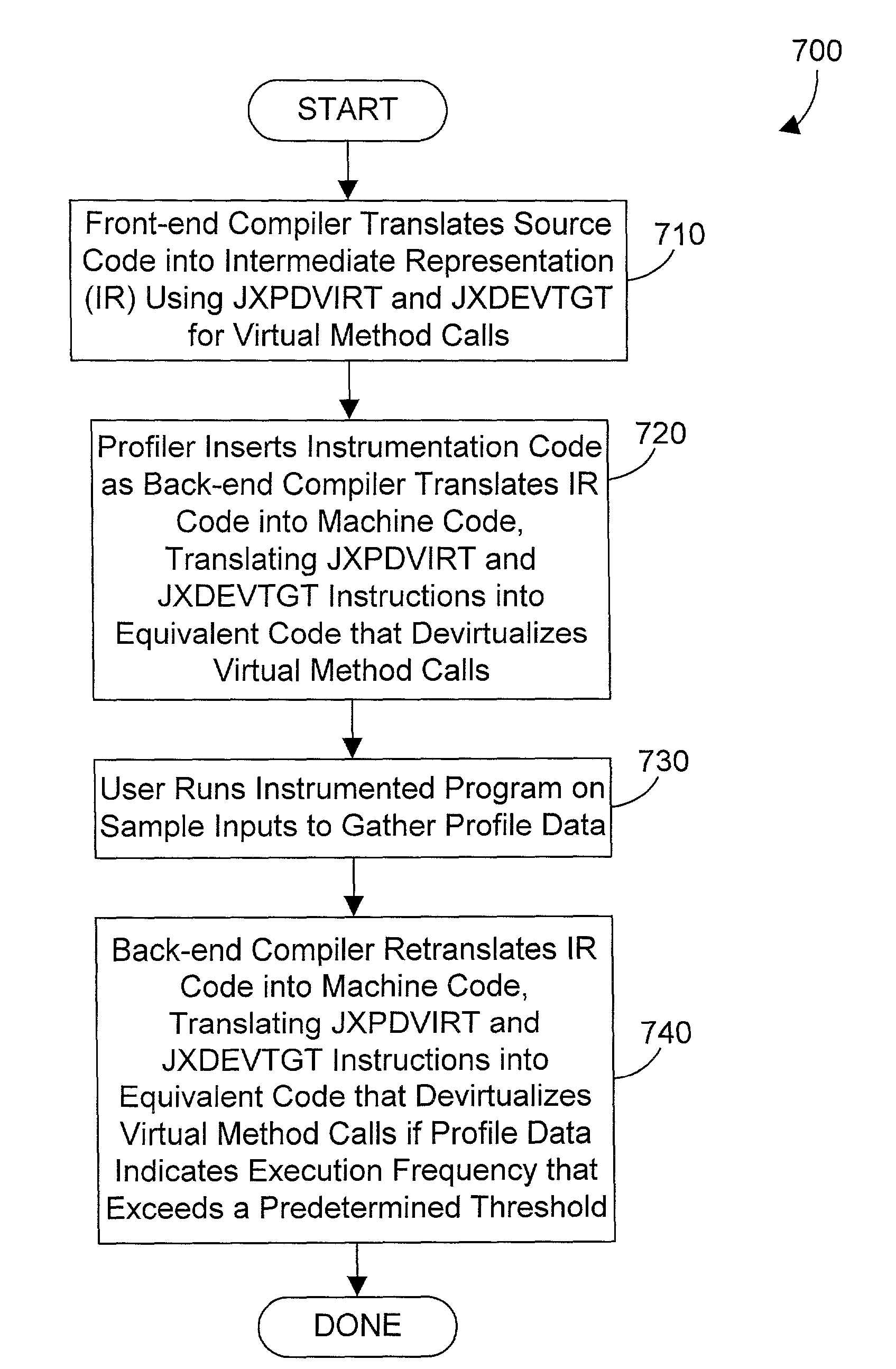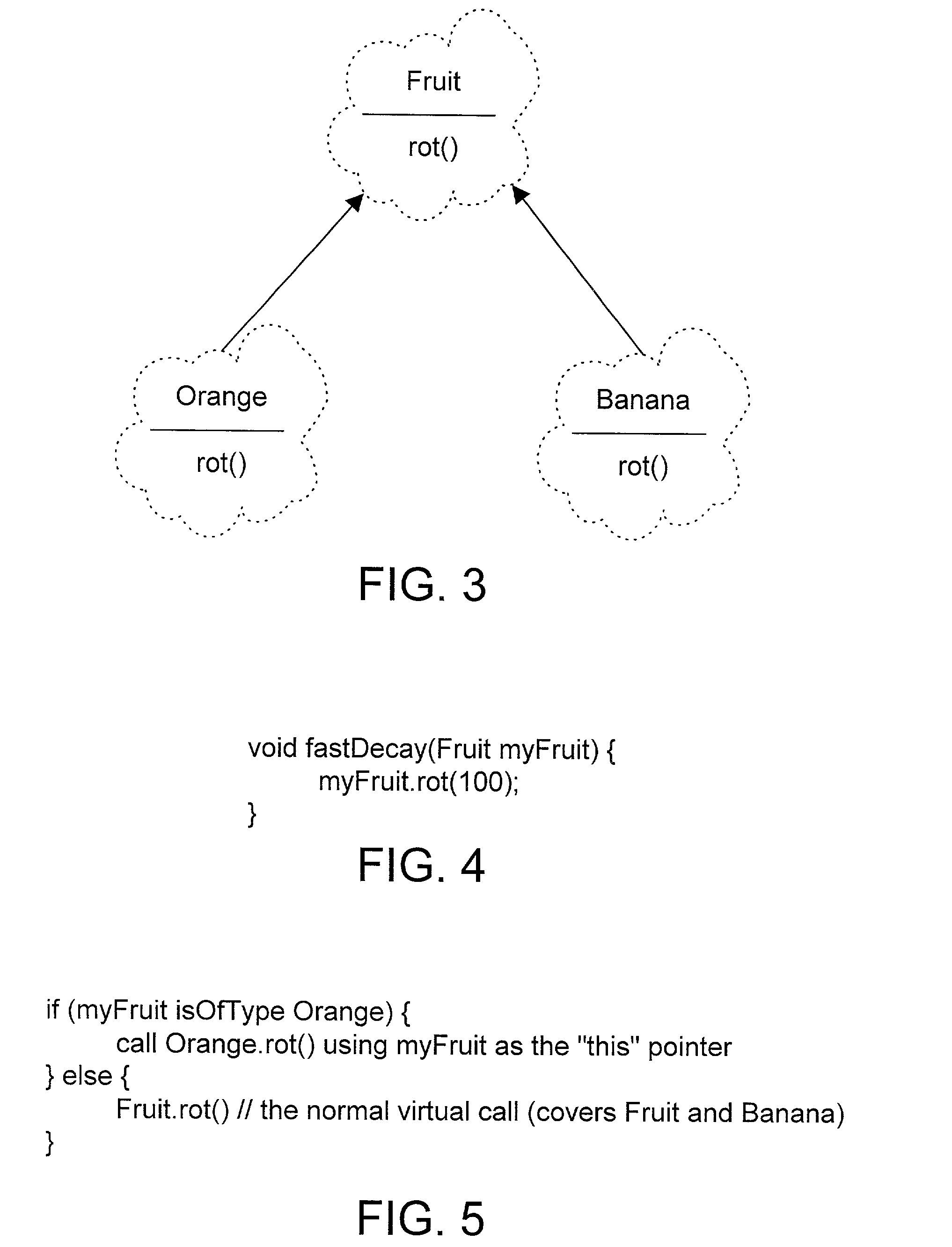Compiler apparatus and method for devirtualizing virtual method calls
a compiler and virtual method technology, applied in computing, instruments, electric digital data processing, etc., can solve the problems of introducing delays in the branching of one portion of the program to the next, increasing the execution time of the computer program, and modern software becoming very complex
- Summary
- Abstract
- Description
- Claims
- Application Information
AI Technical Summary
Benefits of technology
Problems solved by technology
Method used
Image
Examples
Embodiment Construction
[0039] The preferred embodiments provide a back-end compiler that can perform devirtualization of virtual method calls in a computer program. A front-end compiler inserts unique instructions for each virtual method call in the emitted intermediate representation fed to the back-end compiler. The back-end compiler then translates the unique instructions into equivalent code that devirtualizes the method call in the machine code. Profile data is then gathered from executing the machine code from a set of sample inputs. The back-end compiler can then determine from the profile data the frequency of executing each explicit method call, and can generate appropriate equivalent code according to the profile data that devirtualizes the virtual method call and optimizes the performance of the machine code.
[0040] Referring now to FIG. 6, a compiling system 600 of the preferred embodiments includes a front-end compiler 610 and a back-end compiler 620. The front-end compiler 610 processes sourc...
PUM
 Login to View More
Login to View More Abstract
Description
Claims
Application Information
 Login to View More
Login to View More - R&D
- Intellectual Property
- Life Sciences
- Materials
- Tech Scout
- Unparalleled Data Quality
- Higher Quality Content
- 60% Fewer Hallucinations
Browse by: Latest US Patents, China's latest patents, Technical Efficacy Thesaurus, Application Domain, Technology Topic, Popular Technical Reports.
© 2025 PatSnap. All rights reserved.Legal|Privacy policy|Modern Slavery Act Transparency Statement|Sitemap|About US| Contact US: help@patsnap.com



